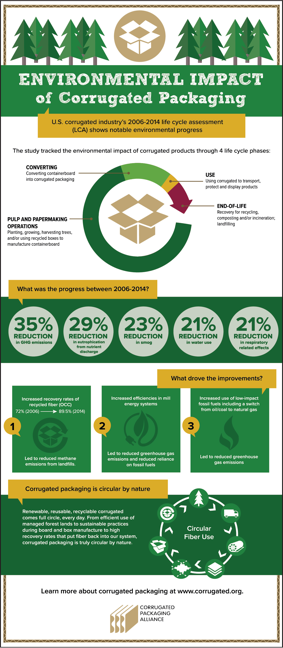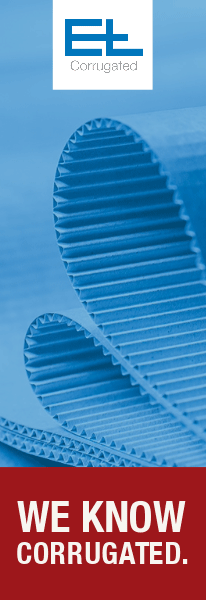The Corrugated Packaging Alliance (CPA) released a new U.S. corrugated industry life cycle assessment (LCA), which shows the corrugated industry’s environmental progress. The full LCA is available for download here
The LCA examined the effects of a 1 kilogram industry-average corrugated product manufactured in 2014 on seven environmental impact indicators: global warming potential (greenhouse gas emissions), eutrophication, acidification, smog, ozone depletion, respiratory effects, fossil fuel depletion; and four inventory indicators: water use, water consumption, renewable energy demand, and non-renewable energy demand.
The corrugated industry reduced its GHG emissions by 35 percent between 2006 and 2014. The reduction was driven by increased OCC recovery and use of energy generated from renewable, carbon-neutral biomass and decreased overall use of fossil fuels.
The recovery rate for OCC increased from 72 percent in 2006 to 89.5 percent in 2014. As more is recovered, less goes to landfill, thereby reducing methane emissions. Other notable improvements between 2006 and 2014 include a 29 percent reduction in the effects of nutrient releases on receiving waters and soils (eutrophication); a 23 percent reduction in photo-chemical ozone creation; a 21 percent reduction in water use; and a 21 percent reduction in respiratory related effects.
The peer-reviewed study, commissioned by the CPA and conducted by the National Council for Air and Stream Improvement is the third study in a series of industry LCA’s. It was conducted in accordance with ISO 14040/44 standards and guidelines for life cycle assessment studies.




